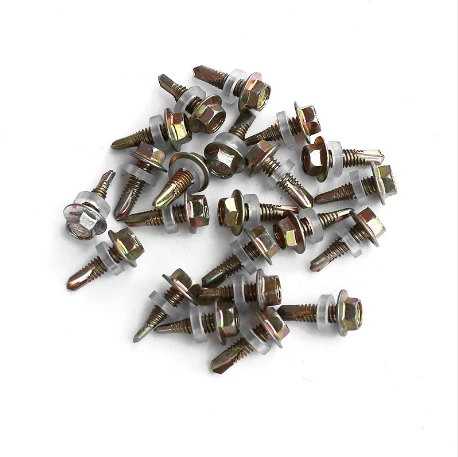

stud bolt asme b18 2.1
Dec . 12, 2024 15:14 Back to list
stud bolt asme b18 2.1
Stud Bolts and ASME B18.2.1 An Overview
Stud bolts are an essential component in various engineering applications, particularly in industries such as oil and gas, construction, and manufacturing. Defined as cylindrical rods with threads that run along their length, stud bolts serve the primary function of fastening two or more components together in a reliable manner. Their design and specifications are crucial for ensuring the integrity and performance of the assemblies they are part of.
One of the key standards that govern the manufacturing and use of stud bolts is the ASME (American Society of Mechanical Engineers) B18.2.1 standard. This standard provides specifications for the dimensions, tolerances, and properties of bolts, screws, and nuts, specifically tailored to meet the diverse needs of various applications. Understanding ASME B18.2.1 is vital for engineers and designers who work with fastening systems.
Key Specifications of ASME B18
.2.1The ASME B18.2.1 standard covers both stud bolts and other similar fasteners. It outlines various dimensions, including length, diameter, and thread specifications. According to the standard, stud bolts are typically categorized by their nominal diameter and length. The diameter of a stud bolt can range significantly, commonly from 1/4 inch to over 2 inches, while the length can vary based on the specific application and requirements.
A critical aspect of ASME B18.2.1 is the thread type. Stud bolts can be produced with different types of threads, such as UNC (Unified National Coarse), UNF (Unified National Fine), and metric threads. The choice of thread type plays a significant role in the load-bearing capacity and engagement of the fastener, which directly affects the overall assembly's performance.
The standard also highlights the importance of material selection for stud bolts. Typically made from carbon steel, alloy steel, stainless steel, or other materials, the choice of material influences the strength, corrosion resistance, and overall durability of the fasteners. ASME B18.2.1 provides guidance on the mechanical properties required for different materials, ensuring that the stud bolts can perform safely under various loads and environmental conditions.
Applications of Stud Bolts
stud bolt asme b18 2.1

Stud bolts find extensive application across numerous industries. In the oil and gas sector, they are often used to secure pipe flanges, valves, and other critical components. Their reliability ensures that there are no leaks in high-pressure systems. In construction, stud bolts are used to fasten structural components, providing the strength needed for building frameworks and infrastructures such as bridges and towers.
In the manufacturing industry, stud bolts are often used in machinery and equipment assembly. Their ability to hold components tightly reduces vibrations and potential failures, enhancing the longevity and efficiency of machines. Moreover, in the automotive industry, stud bolts are utilized in engine assemblies and other high-stress applications, where performance and safety are paramount.
Proper Installation and Maintenance
The effectiveness of stud bolts depends not only on their design but also on proper installation and maintenance. It is critical to follow torque specifications to ensure that the bolts are tightened adequately. Over-tightening can lead to bolt failure, while under-tightening can result in loosening during operation. Various tools and techniques, such as torque wrenches, should be used to achieve the correct torque settings per the specific requirements outlined in ASME B18.2.1.
Moreover, regular inspections and maintenance can prevent issues associated with corrosion and fatigue. Depending on the environment in which the stud bolts are used, protective coatings may also be applied to enhance corrosion resistance and prolong service life.
Conclusion
In conclusion, stud bolts are a fundamental aspect of engineering design and assembly across multiple industries. The ASME B18.2.1 standard provides essential guidelines for their manufacturing and application, ensuring that they meet safety and performance requirements. By understanding the specifications and proper use of stud bolts, engineers and designers can enhance the reliability and durability of their systems, leading to safer and more efficient operations. Whether in oil and gas, construction, or manufacturing, stud bolts play a pivotal role in the functionality of countless applications.
Latest news
-
High-Strength Hot-Dip Galvanized Bolts-Hebei Longze|Corrosion Resistance&High Strength
NewsJul.30,2025
-
Hot Dip Galvanized Bolts-Hebei Longze|Corrosion Resistance&High Strength
NewsJul.30,2025
-
Hot Dip Galvanized Bolts - Hebei Longze | Corrosion Resistance, High Strength
NewsJul.30,2025
-
High-Strength Hot Dip Galvanized Bolts-Hebei Longze|Corrosion Resistance, Grade 8.8
NewsJul.30,2025
-
Hot Dip Galvanized Bolts-Hebei Longze|Corrosion Resistance,High Strength
NewsJul.29,2025
-
High-Strength Hot Dip Galvanized Bolts - Hebei Longze Metal Products Manufacturing Co., Ltd.|corrosion resistance&high strength
NewsJul.29,2025

